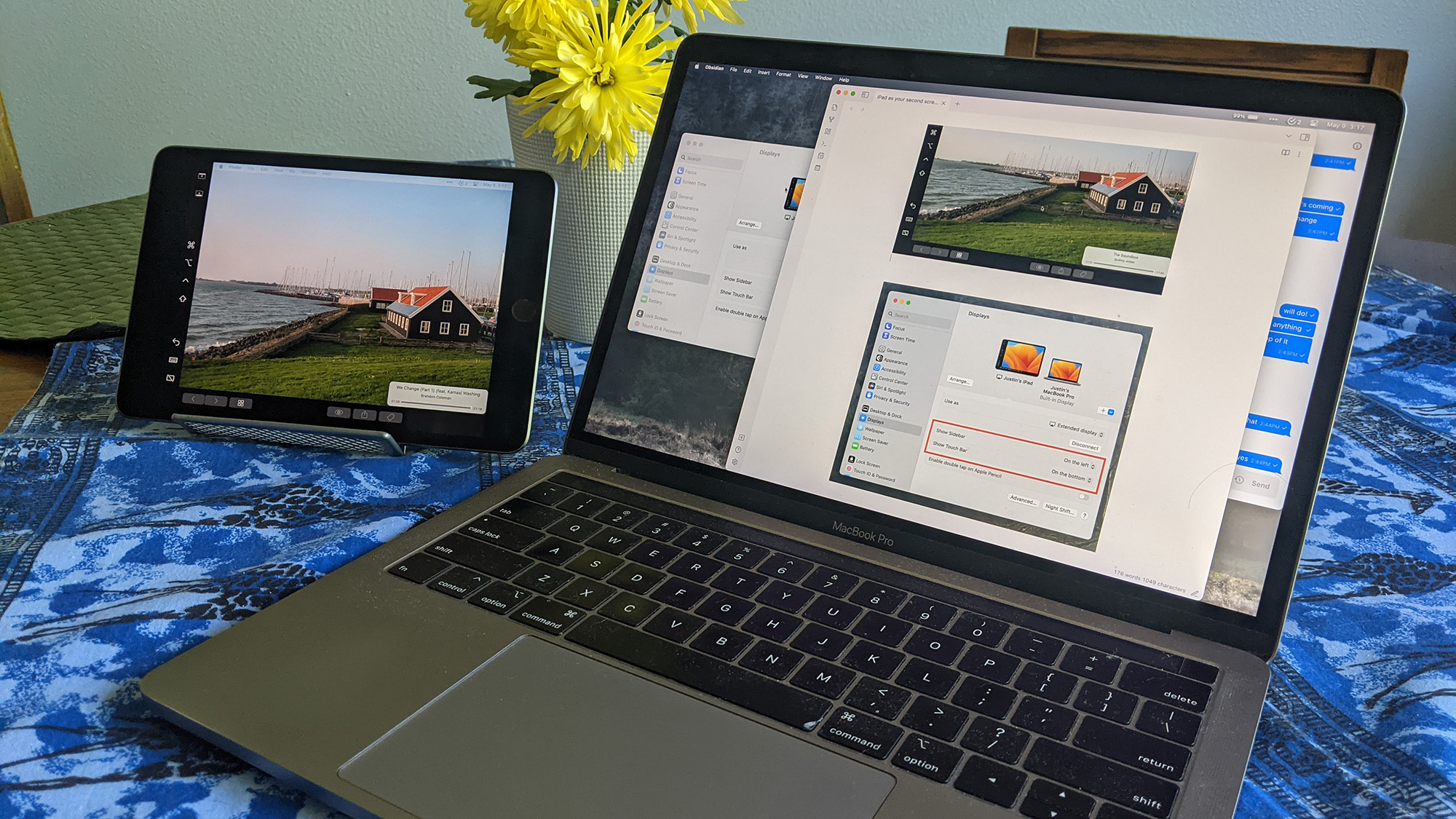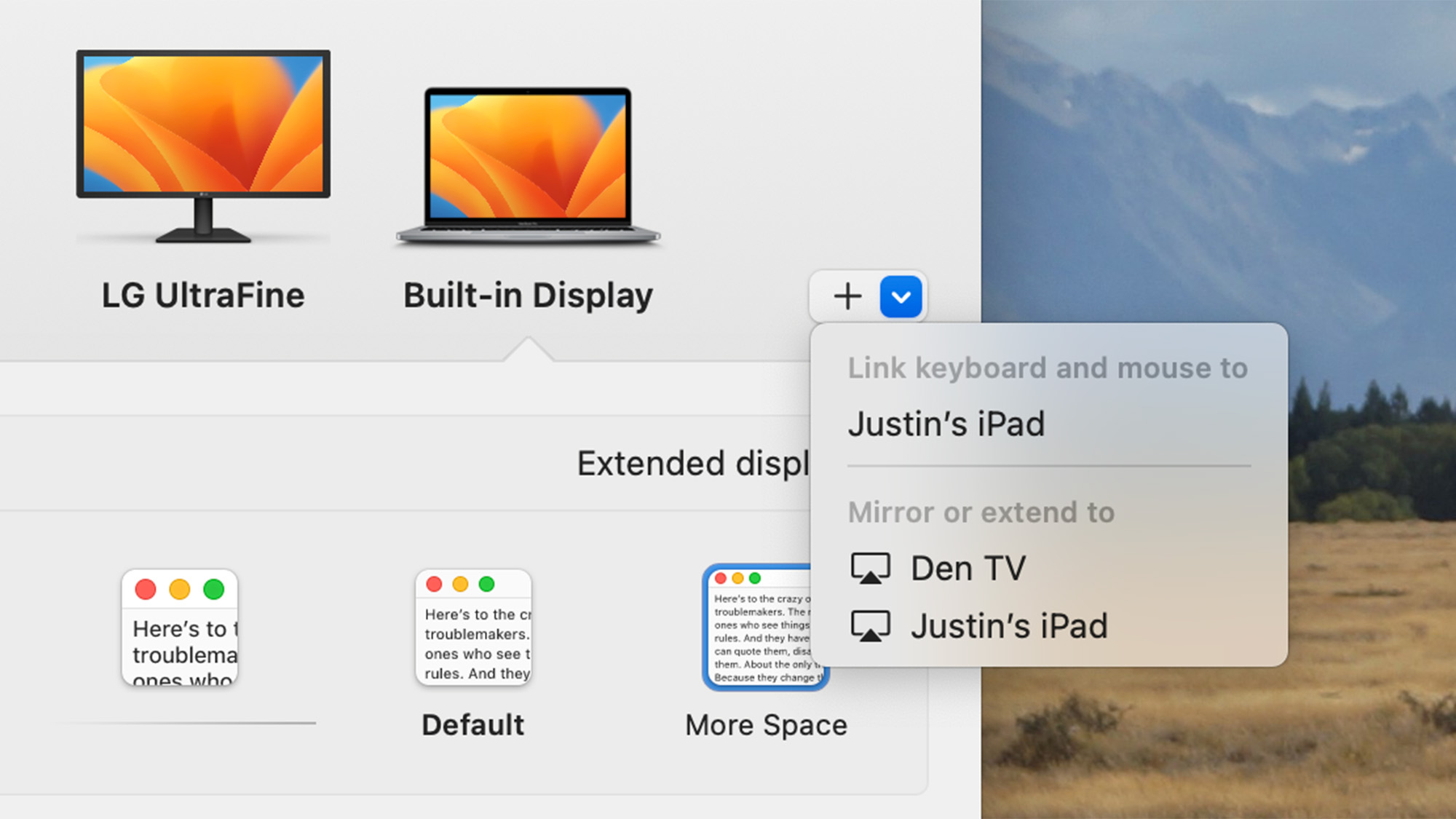

When you get used to multiple monitors it feels impossible to work without them. But these devices are not as portable as your trusty MacBook, so you should probably learn how to use your iPad as a second screen.
Thanks to a feature called Sidecar, iPads can mirror your laptop’s screen or act as an extension of it. And even if they’re not as big as your desktop monitor, Apple’s tablets are a lot easier to pack, so you can seamlessly take your work wherever you go.
How to use an iPad as a second screen for your Mac
The ability to use an iPad as an extra display is built into macOS and iPadOS, and it works completely wirelessly. This means you don’t need a cable to connect your devices, though plugging your tablet into a power outlet might be a good idea if you’re planning on using it for a long time.
[Related: Apple iPad Air (2022) review]
First, make sure both devices are signed into the same iCloud account. Then, open the System Settings app on your Mac, which you can find by clicking the Apple logo in the top-left corner of your screen and then clicking System Settings. On the sidebar on the left, head to Displays, and if your iPad is nearby and turned on, it should show up here automatically. If it doesn’t, click the + (plus) button to the right of the display icons.
On the drop-down menu, under Mirror or extend to, choose your iPad’s name and then Extended display. This will effectively turn your tablet into an extension of your Mac’s screen, meaning you can just drag your windows on your computer over to your iPad.

Physically position your iPad where it’s most comfortable for you and click the Arrange button in the settings menu to make sure your virtual space reflects the device’s physical location in relation to your computer. Drag and drop the icons representing your devices into position if you need to make changes.
By default there will be a bar on the side and at the bottom of your iPad screen. The bar on the left that make it easier to control Mac apps using the touchscreen, while the bar at the bottom is a recreation of the interactive touch bar as seen on the MacBook Pro. If you prefer, you can turn both off by disabling the Show sidebar and Show Touch Bar options—you’ll get fewer on-screen functionalities, but gain more workspace, which is what it’s all about.
How to use an iPad as a second screen for Windows
Windows can’t use your iPad as an extra display out-of-the-box, but there are a few third-party apps you can use as a workaround.
Among the free ones, our favorite is Splashtop Wired XDisplay, but as you’d imagine, setting things up is not as simple as on a Mac computer. First, download the app both on your iPad and your Windows device and open them. Continue by plugging your iPad into your computer and on your iPad, tap Trust to tell your tablet it’s OK to let Windows access your data.
[Related: MacBook Air vs. Pro: Which Apple laptop is right for you?]
Your iPad will immediately turn into a second display for your PC. If the display looks tiny make sure to use the rotation button, in the bottom-right corner of the screen—it looks like a square with a curved arrow on one of its corners. You can also configure your iPad’s screen resolution from Windows’ Display settings—you’ll find a shortcut in the Splashtop Wired XDisplay app.
This isn’t nearly as slick as Apple’s integration for the Mac, if only because it requires a cable, but it works well enough for simple things like note-taking.
If you’re willing to pay Duet Display (starting at $4 a month) you’ll find it has a better framerate and it’s easier to use, but for most people, a free app works well enough.
